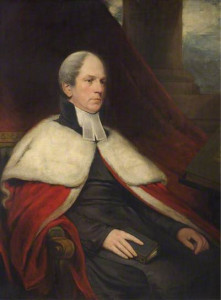1. Songs of thankfulness and praise,
Jesus, Lord, to Thee we raise,
Manifested by the star
To the sages from afar;
Branch of royal David’s stem
In Thy birth at Bethlehem;
Anthems be to Thee addressed,
God in man made manifest.
2. Manifest at Jordan’s stream,
Prophet, Priest, and King supreme,
And at Cana, Wedding-guest,
In Thy Godhead manifest;
Manifest in power divine,
Changing water into wine.
Anthems be to Thee addressed
God in man made manifest.
3. Manifest in making whole
Palsied limbs and fainting soul;
Manifest in valiant fight,
Quelling all the devil’s might;
Manifest in gracious will,
Ever bringing good from ill.
Anthems be to Thee addressed,
God in man made manifest.
4. Sun and moon shall darkened be,
Stars shall fall, the heavens shall flee;
Christ will then like lightning shine,
All will see His glorious sign;
All will then the trumpet hear,
All will see the Judge appear;
Thou by all wilt be confessed,
God in man made manifest.
5. Grant us grace to see Thee, Lord,
Mirrored in Thy holy Word;
May we imitate Thee now
And be pure as pure art Thou
That we like to Thee may be
At Thy great Epiphany
And may praise Thee, ever blest,
God in man made manifest.
The Hymnal is the liturgical book of the laity, and the Episcopal Hymnal of 1940, which Mount Calvary uses, was carefully thought out in both its organization and choice of hymns. The Epiphany hymn Songs of Thankfulness and Praise was written by Christopher Wordsworth, the nephew of the poet William Wordsworth. Christopher Wordsworth was an athlete, classicist, poet, and Anglican bishop of Lincoln, to which he was appointed by Disraeli. He wrote the hymn for the Sixth Sunday after Epiphany and described it as “recapitulation of the successive manifestations of Christ, which have already been presented in the services of the former weeks throughout the season of Epiphany; and anticipation of that future great and glorious Epiphany, at which Christ will be manifest to all, when he will appear again to judge the world.”
Epiphany means “manifestation.” The Son of God existed eternally, but he was manifested in time. First of all at his birth to the Jews in the persons of the shepherds, as he was the offspring of David, the “branch of royal David’s stem”; but then to the pagans, the Gentiles, the “sages from afar.” He began to fill the prophecies that all nations would come to worship the Lord.
![]()
Again he was manifested at his Baptism in the Jordan, when the Spirit in the form of a dove descended on him and a voice was heard from heaven, “Thou art my beloved Son; with Thee I am well pleased.” His Sonship was publicly announced.
John emphasizes that Jesus worked his first miracle at Cana, “Changing water into wine.” He “manifested his glory, and his disciples believed in him.” Jesus continues working his miracles to manifest his Godhead, and his miracles are not miracles to punish sinners, but in healing bodies, “in making whole/Palsied limbs and fainting soul,” and in delivering men from the power of Satan, “quelling all the devil’s might,” first in his exorcisms and at the end, in the “valiant fight” of his death and descent into Hell to destroy the power of the devil and of death.
This stanza refers to Jesus, “ever bringing good from ill.” The existence of evil, suffering, and death is a mystery: how could a loving God allow such things. But in the life of Jesus on earth we see a manifestation of God’s “gracious will,” that “ever” brings good from evil. How this will be is not yet fully manifest.
The 1940 Hymnal unfortunately does not use the fourth stanza of the hymn, the stanza which explicitly refers to the end of the world, when “stars shall fall, the heavens shall flee” at the sound of the trumpet, and “all will see the Judge appear.”
But the last stanza also refers to the End and our preparation for it. The purpose of the Scriptures is to show us Christ, “mirrored in Thy holy Word.” We imitate Jesus by becoming pure as He is pure, free from all sin, both justified and sanctified. We are indeed divinized, “like” The Son, “partakers of the divine nature.” This stanza mentions “Thy great Epiphany,” which is the end of the world, when Jesus will be fully manifest as Judge in his divine power over all creation. At the end all will be praise, as God reveals His gracious purpose for creation and history, and in the vision of that, we will be “blest.”
Hymns for specific events often incorporate references to the main events of the history of salvation, so that we do not forget the important connections among the events. Jesus was born so that he could die, and he died so that he could rise and return as the Judge of all the world. At Christmas especially it is easy to indulge sentimentality, forgetting the dark shadows that already are present, and the light that will at the end conquer those shadows. The greatest hymns remind us of this.
PS This hymn has been modified in many hymnals because it uses the word “man,” which is offensive to the ears of those who do not want any mention of masculinity in the Church. The line is changed to “God in flesh made manifest,” which is theologically correct, but of course eliminates the rhetorical connection between “manifest” and “man.” Rhetoric persuades not so much by logic as by making an idea seem natural and inevitable: Where else should God be manifest but in man?
